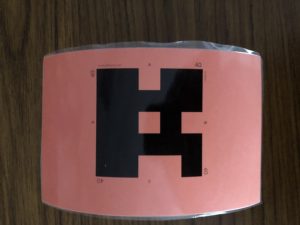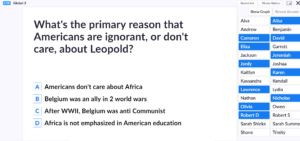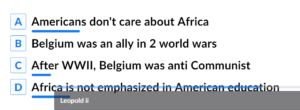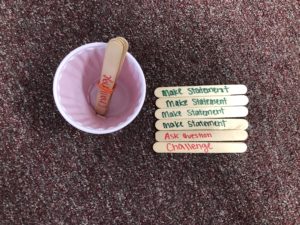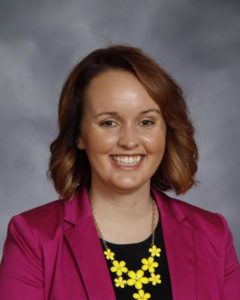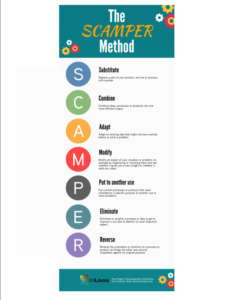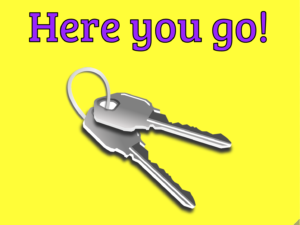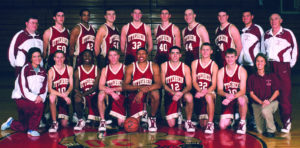I wanted to produce an episode before school started and I wasn’t sure if it was going to materialize. Starting next week, I’ll be teaching all new classes, at a new school, and at the college level. It’s been a busy summer, but I’m excited to embark on my next teaching journey.
This episode is short and simple, but it has tremendous potential to positively impact the way your class operates and student learning. 10 years ago, my room was cluttered. My wife has a label for people like I was…He’s a piler. That label was true. I did have a lot of piles of paper stacked in chaotic places around my room. I wasn’t proud of this, but when all of my students filed into my class each morning and the day just erupted into frenzied activity, my energies turned towards engaging them and not organizing the flurry of papers that I distributed and then collected.
This unsatisfactory situation changed when my school started using Google Drive. The piles of paper disappeared, my drive was organized and easily accessed, and my uncluttered room took on a Feng Shui-like character. I was transformed into such a paperless fan that I decided to create a Landing Pad for many assignments. This virtual collaboration igniter is what I’ll highlight in this episode. It’s not revolutionary, but it’s powerful. I thought it would be useful to share a great and simple idea on the last week of summer vacation.
My Landing Pad is merely a Google Doc that contains my class roster. The students are listed in alphabetical order by their last names. You keep this doc in your drive and merely make a copy when you decide to use it. I frequently sort my students into groups. You take the Landing Pad copy and sort the students accordingly. Then, you must change the sharing settings so the document is editable and then share the link with students. Once students have created something, be it a narrative, a Google Drawing, a virtual timeline, an image, or a video, they merely copy a link for their creation, highlight their name on the Landing Pad, and then insert the link. All of a sudden, their name turns blue! Here’s an image of a Landing Pad from my class.
Notice that a few students did not complete the assignment. They are still in black. I removed the last names for privacy sake, but if they were still there, you would have also noticed that the students were no longer in alphabetical order. I arranged them for this activity.
Here are advantages to utilizing such a system
Paperless:
Students don’t lose the prompt, or their creations. As long as they have technology and internet, they have anywhere, anytime access.
Collaborative:
In the Landing Pad highlighted in the image, it was a jigsaw activity. Each student was to research an aspect of our topic then enlighten the peers in their group. Because a few kids did not complete the task (their names are still in black on the image), members of short-handed groups merely opened links from other groups and learned what they needed. They could even invite the creator of the link to their group as a goodwill ambassador who could enlighten them about the aspect that their group is missing.
Accountability:
It’s painfully obvious who’s done the work and who has not. Teachers know before class starts whom they have pull aside for remediation.
Management:
I once lost a student’s project. Or, at least I think I lost it. The kid swore he turned it in. I had my doubts, but me losing a paper was certainly plausible. This scenario is now a relic. I know exactly who’s turned in their work and I never walk out of the building carrying a load of papers that I’m going to have to lug back to school the next morning.
Facilitates Learning:
Influential Austrailian researcher John Hattie’s focus is influences on student achievement. His 2018 List is comprised of 252 influences on student learning. The Jigsaw method is number 7! A Landing Pad is a perfect way to facilitate such learning.
Episode Template
The Problem:
Students need a simpler way to turn in work and collaborate.
The Solution:
Utilize a virtual Landing Pad.
What you can do Tomorrow:
- Create a Google Doc of your class roster.
- Make a copy, then rearrange the names into groups of your liking.
- Make the doc editable.
- Share the link with students and direct them to highlight their names and then insert a link for their completed work.
- On the collaboration day, encourage students to access links of classmates outside their group to fill in any gaps.
Please try a Landing Pad this semester. Wouldn’t you like to walk out of school empty-handed?
Listen to “James Sturtevant Hacking Engagement” on Spreaker.





